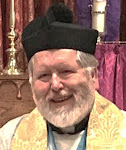
The Conversion of Saul
Michelangelo (1475 – 1564)
(Fresco, Cappella Paolina, Palazzi Pontifici, Vatican)
Saul, from Tarsus, in present-day Turkey, was at the same time a Roman citizen and a devout Jew, having even studied in Jerusalem under Gamaliel, the most famous rabbi of the day. He said of himself, “I am an Israelite, a descendant of Abraham, a member of the tribe of Benjamin” (Romans 11:1), "circumcised on the eighth day, of the people of Israel, of the tribe of Benjamin, a Hebrew born of Hebrews; as to the law a Pharisee . . . as to righteousness under the law blameless" (Philippians 3:5).
Only a few years after the death and resurrection of Jesus, Saul encountered the new Christian movement, and became one of the most its most fanatical persecutors. He was among those determined to stamp out this “dangerous heresy.” Saul is mentioned as having witnessed the stoning of Stephen (Acts 7). We next read of his journey to Damascus to lead further persecution of the fledgling Christian community. On this journey his dramatic conversion took place (Acts 9).
From that day until the end of his life, Paul, as he was then known, gave himself unstintingly in the service of the Lord Jesus Christ and his Church. His special vocation was the conversion of Gentiles. We only have to read the Acts of the Apostles to see the courage and determination with which he established local church communities round the eastern Mediterranean Sea.
His letters to those communities (as well as a few to individuals), are the earliest of Christian writings. They reveal Paul to have been a great interpreter of Jesus' death and resurrection, and an apostle with a real concern for the Church to grow in love and unity. He writes, “I have been crucified with Christ; it is no longer I who live, but Christ who lives in me; and the life I now live in the flesh I live by faith in the Son of God, who loved me and gave himself for me” (Galatians 2:20).
Life wasn't easy for Paul after he became a Christian, on account of so many enemies who tried to destroy his work. He was apparently not an imposing person, but small and insignificant looking. His critics said, “His letters are weighty and strong, but his bodily presence is weak, and his speech is of no account” (2 Corinthians 10:10). He had a disability which he had prayed might be taken away from him, and quotes the Lord’s reply, “My grace is sufficient for you, for my power is made perfect in weakness.” In spite of all this Paul continued to fulfil his vocation, preaching the Gospel and caring for the churches. He said, “I will al the more gladly boast of my weaknesses, that the power of Christ may rest upon me (2 Corinthians 12:9).
Paul was martyred at Rome in the year 64, during the the emperor Nero's persecution of the Church.
On this feast of the Conversion of St Paul, as is now customary, the closing vespers of the Week of Prayer for Christian Unity will be held at the Basilica of St Paul's Outside the Walls in Rome. Representatives of all the Christian traditions will be there, and Pope Benedict will give the homily. St Paul's is one of my favourite places in Rome, so I share with you five of the photos I took there in July last year:

The approach to the basilica

The interior

The altar and baldachino

From the apse mosaic

The cloister garden

















1 comments:
Thankyou for the gift of the five photographs...
I especially liked the colour yellow in the "Approach to the Basilica" and the "Alter with Baldachino", reminds me of a (cuppachino).
The manicured gardens are very beautiful too!
Post a Comment